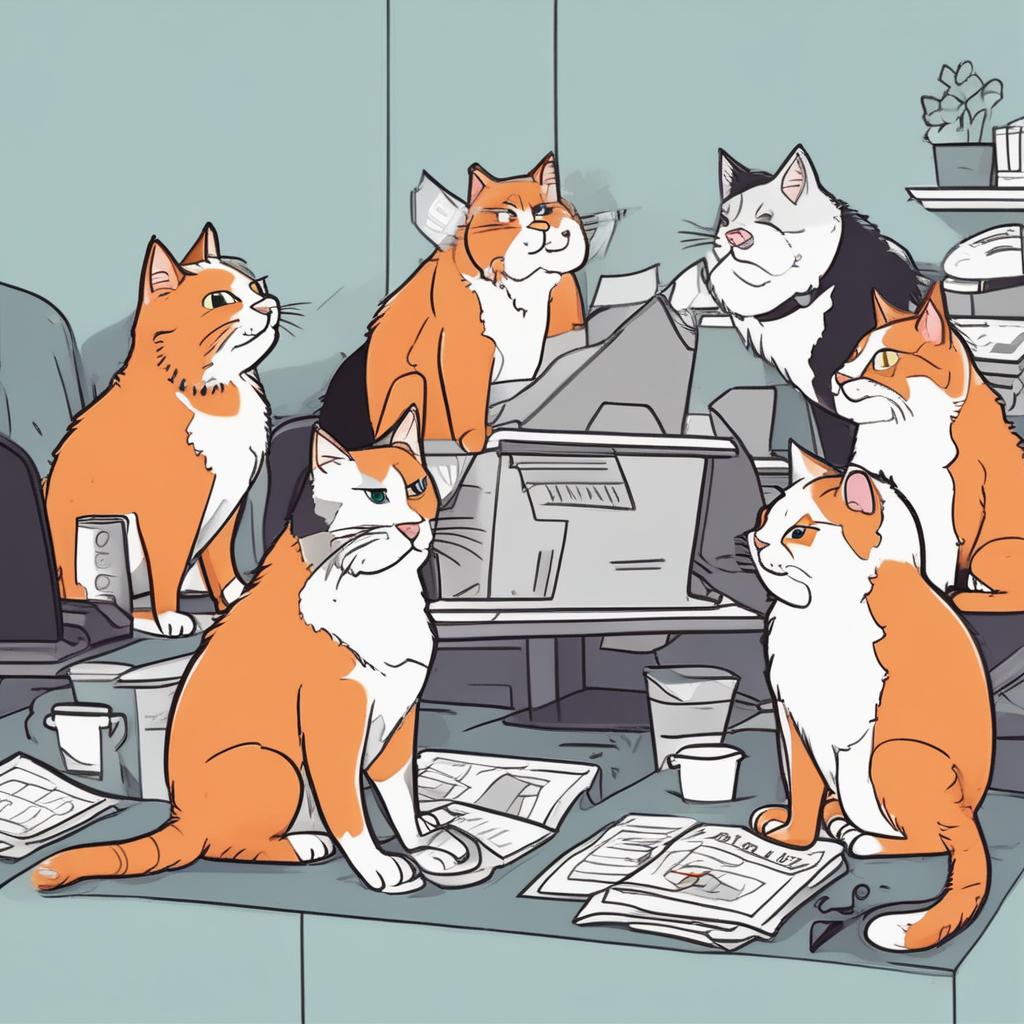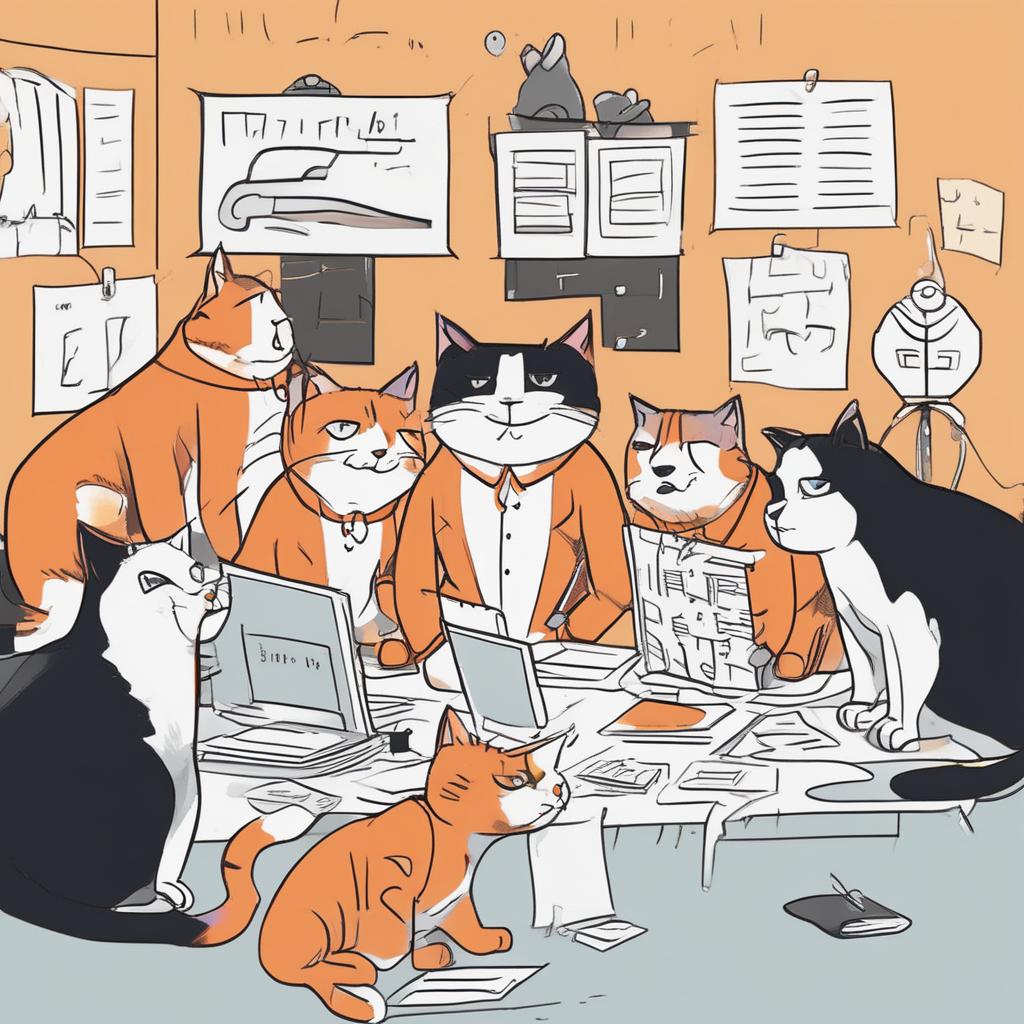Product Owner.
I am trying to think about the way to understand a-become-larger-company within Agile Framework.
I guess, now I am in a career break (which can be very short LOL.) All I can imagine are cats.

Agile vs. Scaled Agile
Agile
Key Characteristics
- Small, cross-functional teams (5-9 members)
- Focus on single product or project
- Short iterations (1-4 weeks)
- Daily stand-up meetings
- Product backlog management
Strengths
- Highly flexible and adaptive to changes
- Faster time-to-market for products
- Improved team collaboration and communication
- Continuous feedback and improvement
- Higher customer satisfaction
Weaknesses
- May struggle with larger, complex projects
- Limited focus on long-term planning
- Potential for scope creep
- Relies heavily on team member skills
- Can be challenging for traditional organizations to adopt
Scaled Agile
Key Characteristics
- Multiple agile teams (50-125+ members)
- Program and portfolio-level focus
- Longer planning horizons (8-12 weeks)
- Scrum of Scrums for inter-team coordination
- Portfolio management and prioritization
Strengths
- Suitable for large, complex projects and organizations
- Aligns teams with organizational strategy
- Improves coordination between multiple teams
- Balances short-term delivery with long-term planning
- Provides frameworks for scaling (e.g., SAFe, LeSS)
Weaknesses
- Can introduce additional complexity and overhead
- May reduce flexibility compared to pure Agile
- Requires significant organizational change
- Risk of becoming too process-heavy
- Can be challenging to implement consistently
From Waterfall to Agile to Scaled Agile: The Journey
Alright, let’s talk about how to shake things up and move from the old-school waterfall method to the cool kids’ table with Agile, and then go big with Scaled Agile. Here’s the deal

Waterfall ---> Agile ---> Scaled Agile
| | |
v v v
[_____] [~~~~~] [~~~~~]
[~~~~~]
[~~~~~]
Step 1
Ditch the Waterfall
First things first, we gotta break free from the waterfall mindset. It’s like trading in your flip phone for a smartphone. Here’s how
- Get everyone on board – from the big bosses to the interns. It’s a team effort!
- Kiss those long, dragged-out project phases goodbye. We’re going for quick wins now.
- Embrace change like it’s your new best friend. Plans will change, and that’s cool.
- Start talking to your customers more. Like, way more. Their feedback is gold.
Step 2
Embrace Agile
Now we’re cooking with gas! Agile is all about being quick on your feet. Here’s the secret sauce
- Retrospectives are your new favorite meeting. What worked? What didn’t? How can we level up?
- Break your work into small, manageable chunks. Think bite-sized, not whole-pizza-in-one-go.
- Get into the habit of daily stand-ups. Quick, to-the-point chats to keep everyone in the loop.
- Sprint like you mean it. Short bursts of focused work, then pause to see how you did.
Step 3
Scale It Up
Alright, hotshot, your team’s got Agile down pat. But your company’s growing faster than a kid in a growth spurt. Time to scale
- Coordinate multiple Agile teams like a boss. Think “Scrum of Scrums” – it’s like Inception, but for meetings.
- Align everyone with big-picture goals. We’re talking company-wide epic quests here.
- Introduce roles like Release Train Engineers. Sounds fancy, right? They keep the trains (teams) running on time.
- Plan in longer cycles, but keep the Agile spirit. It’s like zooming out on Google Maps while still knowing the street-level details.
- Tools are your friends. Invest in software that can handle the complexity. Your sticky-note budget will thank you.
This isn’t an overnight makeover. It’s more like growing out a sick beard – it takes time, patience, and a bit of awkward in-between phases. But stick with it, and before you know it, you’ll be running a lean, mean, Scaled Agile machine.
From what I’ve educated myself.. Well, last night. (There are a lot to learn…)
SAFe (Scaled Agile Framework)
SAFe is like a big instruction manual for making large companies work in an Agile way. Imagine you’re building a huge Lego castle, but instead of one person doing it, you have many teams. SAFe helps all these teams work together smoothly.
Key points
- It’s for big projects and big companies
- It has different levels – team, program, and big picture (portfolio)
- It uses special roles to keep everything organized
- It has big planning sessions every few months
- It tries to make sure everyone is working towards the same goals
LeSS (Large-Scale Scrum)
LeSS is like taking the rules of a small Agile team and stretching them to fit a bigger group. It’s as if you’re turning a small family game into something a whole neighborhood can play together.
Key points
- It keeps things simple – uses as few rules as possible
- All teams work on one product together
- There’s one person (Product Owner) deciding what to build next
- Teams coordinate directly with each other
- It focuses on making the whole product better, not just individual parts
I guess the difference is
- SAFe is like a detailed cookbook with lots of recipes
- LeSS is more like basic cooking tips that you can adjust as you go
Both try to help big groups work in an Agile way, but SAFe gives more specific instructions, while LeSS tries to keep things as simple as possible.
I hope this understanding facilitate me on my career transition journey
Sirinapa.

Leave a Reply